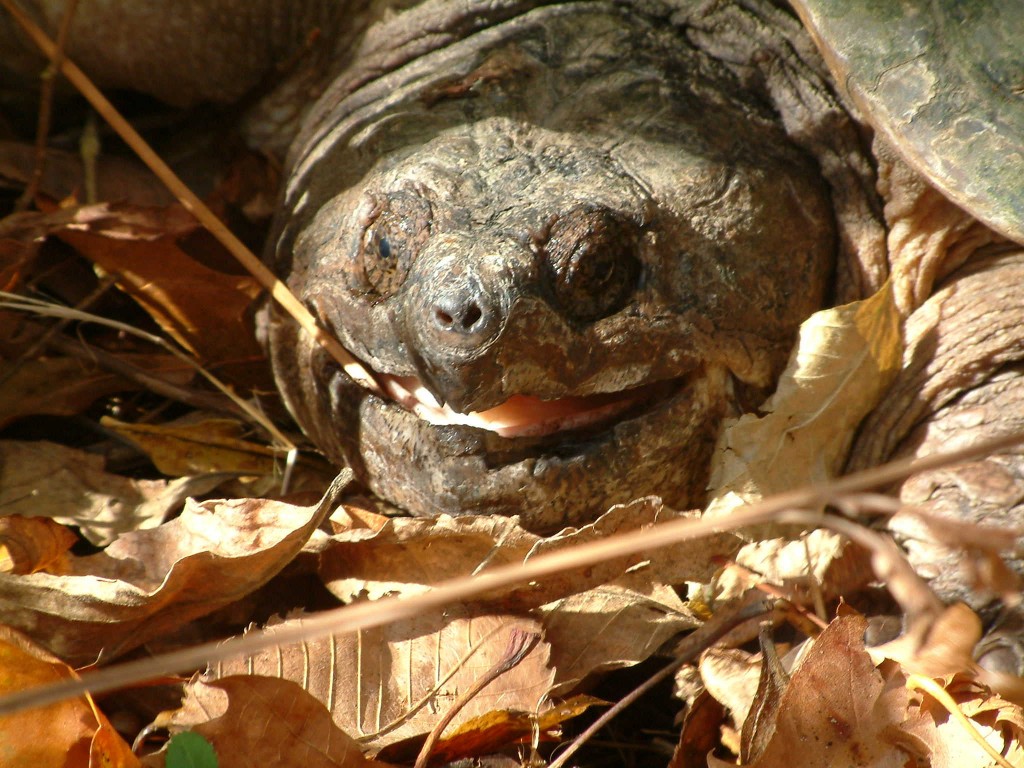Late spring. Evening. Approaching Concord by car in a hurry, I lean into the curve that emerges from the woods just before the bridge on Lowell Rd. Fifty yards ahead a woman with one arm extended scurries across the road. I tap the brakes, slow down to look as she reaches the west shoulder that drops off into the Concord River’s flood plain. Across the road her car idles, its flashers on.
In her hand is a medium-sized turtle, and she bends over the bank’s slope, places the turtle there, then straightens and looks out to the river. The turtle takes a step and disappears downhill into the grass.
I cruise into town, still decelerating, and, as I slow, an image from my recent walk in the Carlisle Cranberry Bog rises from memory’s soup. It lays a claw over consciousness’ rim and climbs out like a turtle. There in vision’s sidebar is movement, a stone walking impossibly over the flat bog. It tilts to shift a leg forward, and, as it does, my mind finds the familiar: turtle. They are on the move today, and, as I circle the gravel track with my dog, we see four more, snappers between eight and twelve inches in diameter hunkered down in depressions, claws hugging the ground, laying white eggs in the dark earth.
By the time I reach Keyes Road, the story of the Lowell Rd. scene I’ve just witnessed is complete. The woman has rescued the turtle from one of our fast lanes and carried her to safety. I park and start walking. I think about what it means to stop for turtles.
I suppose the woman was hurrying too. It seems we always are. Still, when she shifted her foot to the brake, and, at least temporarily, chose the reptile over her destination, I say she became more herself, that is, more human. Of course she stands in stark contrast to those drivers who veer to hit what they catch in the scopes of their eyes or headlights, but she also offers a change from the rest of us too, the passersby.
Bypassing is one of our national habits. Who among us has not mastered the art of averting his or her eyes when street-people approach? How adept the studied disconnection of bus and subway riders when an older person hobbles in and must stand. How poor our hearing when violence erupts. How quickly we pass by turtles in the road.
To reach down and lift, by its rough-edged carapace, the kin of snake to safety is to reach across an ancient breach, to remedy a story of human separation and disconnection we’ve told since Adam and Eve’s expulsion from the Garden of Eden.
Such a choice on Lowell or any other road, mindful of the turtle’s beak and hooked nails, careful of the oncoming traffic, joins one with another. In that moment we stop passing by; we stop wandering; we come home.


One response to “Stopping for Turtles”